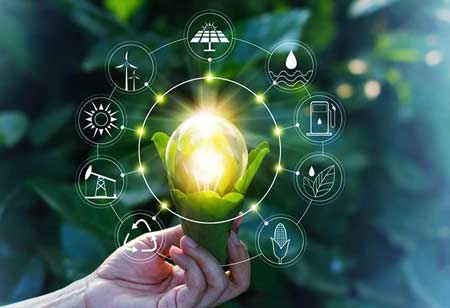Thank you for Subscribing to Energy Business Review Weekly Brief
Energy Partners to Bring in Radical Changes
Since Russia's intervention in Ukraine began, the European Commission has enacted six penalty packages,

By
Energy Business Review | Thursday, January 06, 2022
Stay ahead of the industry with exclusive feature stories on the top companies, expert insights and the latest news delivered straight to your inbox. Subscribe today.
Moving away from the Russian energy supply, the EU will also prioritise energy savings and efficiency, aiming to achieve a 5 per cent reduction in oil and gas demand in the short term that is expected to decrease the price and demand pressure on the global energy markets.
FREMONT, CA: Since Russia's intervention in Ukraine began, the European Commission has enacted six penalty packages, the most recent of which includes a total import embargo on all Russian seaborne crude oil and petroleum products. Nearly 35 per cent of the EU's energy mix is made up of oil, and 97 per cent of that oil is imported. Only from Russia did the EU buy crude oil worth 48 billion Euros and refined oil products worth 23 billion Euros in 2021. It will take a significant expansion of renewable energy sources, accelerated electrification, and the replacement of fossil-based heat and fuel in industry, buildings, and transportation to end the EU's dependency on Russian fossil fuels. In the EU, solar energy is already the source with the quickest rate of growth. The Commission proposes an expanded objective of over 320 GW of solar PV newly installed by 2025 and approximately 600 GW by 2030 with a new, dedicated EU solar strategy, which was introduced with the REPowerEU package. To address the lengthy and intricate permitting procedures for renewable energy projects as well as their capacity constraints, the Commission presented a recommendation on permitting in March, outlining options available to EU nations to speed up the process, ease the purchase of electricity, and give citizens more control. Gas imports will be reduced by almost 50 billion cubic metres thanks to the quick deployment of solar and wind energy projects and the quick spread of hydrogen fuel cells. Diversifying the EU's energy supply is as vital to accelerating and investing in renewable energy. Natural gas accounts for nearly a quarter of all the energy used in the EU, and only ten per cent of it is supplied by local production, making the EU the largest importer of natural gas in the world. In 2021, the EU bought 11 per cent from Algeria, 24 per cent from Norway, and 41 per cent from Russia to meet its gas needs.
The EU external engagement energy strategy unveiled alongside the REPowerEU package is focused on establishing enduring international alliances, promoting EU clean energy companies, and quickening the clean energy transition. While fostering deeper energy cooperation with international partners, it seeks to increase the EU's energy security, resilience, and independence. These will incorporate long-term energy cooperation on hydrogen, renewable gases (including biomethane), and other environmentally friendly energy sources with gas cooperation. Since each EU nation has a unique energy mix and set of needs, its reliance on Russian energy supplies varies. In light of this, the EU energy platform, which was created in April by the Commission and member states of the EU, will be crucial in combining demand, coordinating infrastructure use, negotiating with international partners, and getting ready for combined gas and hydrogen purchases. The platform will also work through regional task groups that will identify needs, diversify supplier possibilities, and collaborate on contractual concerns. The platform is also open to the Western Balkans, Ukraine, Moldova, and Georgia. The EU will work to ensure that additional gas supplies from both current and new gas providers are combined with focused efforts to reduce venting and flaring as well as methane leaks, increasing market liquidity while guaranteeing major climate benefits.
To ease the import of 10 million tonnes of renewable hydrogen by 2030 and make up for the gas that will no longer be imported from Russia, the external energy policy also calls for the establishment of hydrogen partnerships with EU neighbours and other partner nations. Additionally, it envisions the creation of a Global European Hydrogen Facility as well as three significant hydrogen import pathways from the North Sea region (Norway and the United Kingdom), the Southern Mediterranean region, and Ukraine.






